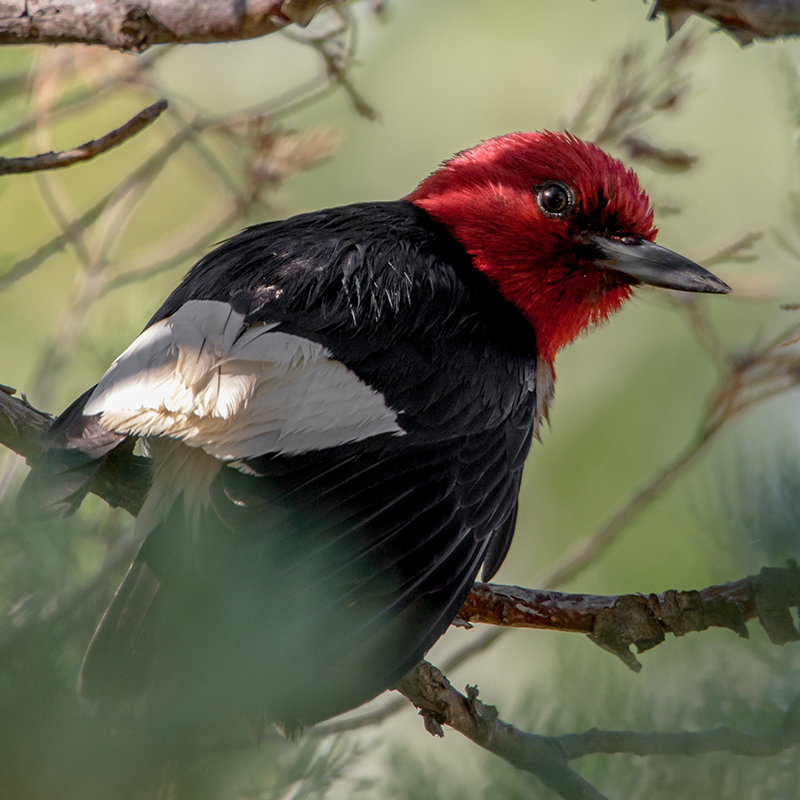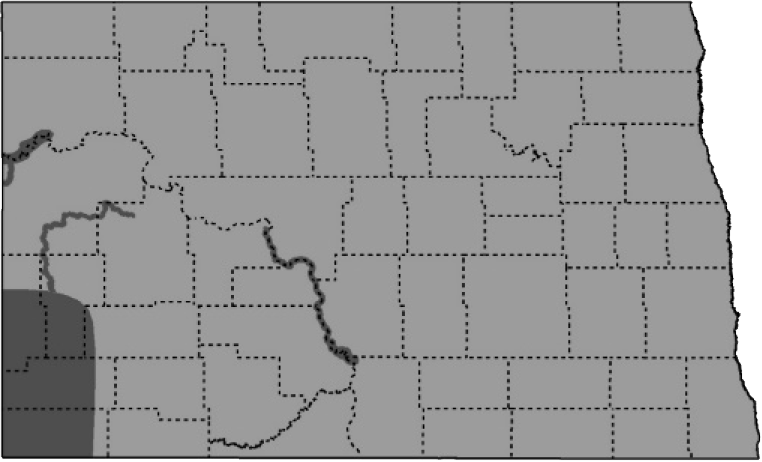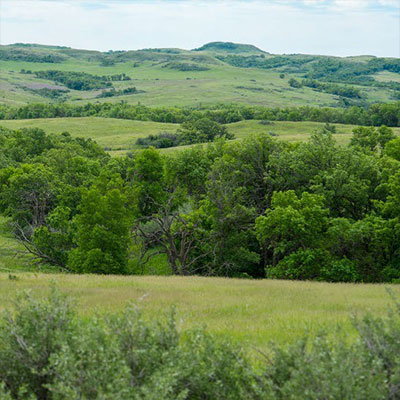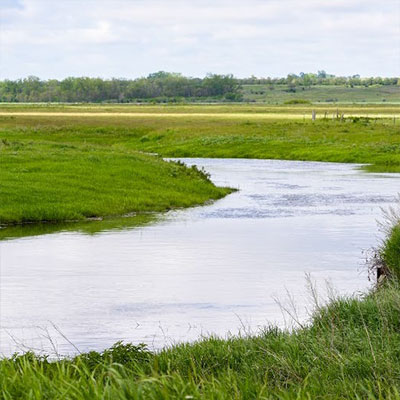Red-headed Woodpecker

NDGF
L 9.25”, WS 17”, 2.5 oz. Red head, black upper back and tail, white on rear of wings and upper rump.
Status in North Dakota
Occurs in North Dakota from mid-April to October. Peak breeding season early June to early August.
Reason for SWAP Designation
At-risk based on expert review (SGCN c.).
ND ranks 30th out of 35 states for highest percent of the global population during the breeding season (eBird).
The Red-headed Woodpecker population has decreased 67% since 1970, but IMBCR and eBird indicate an increasing trend in recent years.
Threats
Loss and degradation of native riparian habitat and lack of riparian regeneration.
Removal of dead trees or branches limits nest site availability.
Susceptible to being hit by vehicles while plucking injured or dead insects from roads.
Some mortality from collisions with communication towers.
Other birds may compete with Red-headed Woodpeckers for nesting cavities.
Research and Monitoring
Habitat requirements are generally known.
Little is known about reproductive success, annual adult survival, or fledgling survival.
Additional information is needed on migration and wintering behaviors.
The Breeding Bird Survey, eBird and Partners in Flight Databases are key sources of information on distribution and population trends.
Management Recommendations
- Protect and restore native riparian habitats.
- Limit or exclude grazing in riparian areas.
- Protect riparian corridors.
- Leave snags and dead trees.
- Plant mast producing trees such as oak.
- Remove starlings if competition is present.
- Follow beneficial or best practices during the design, siting, construction, operation, and maintenance of tall structures (e.g. transmission lines, communication towers, wind turbines).




